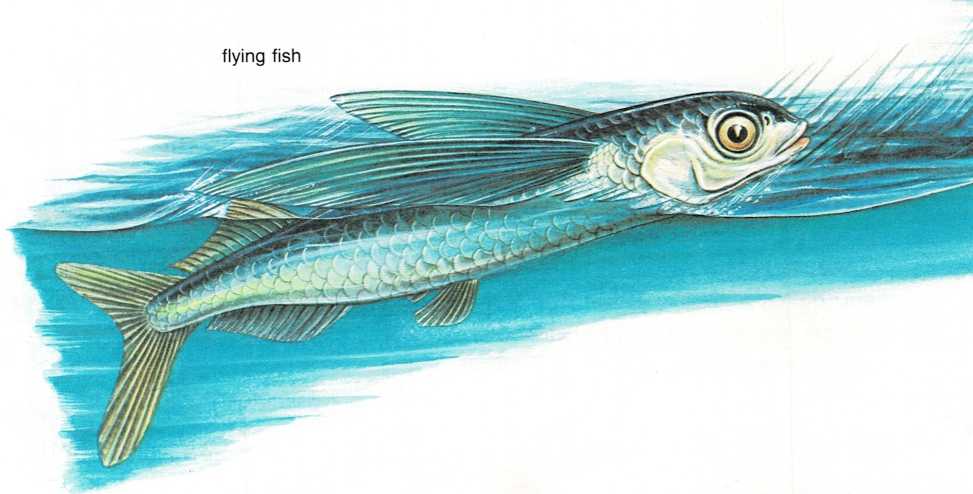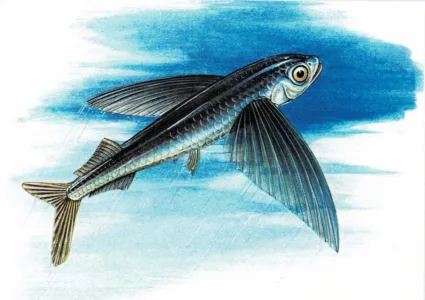Flying fish
The big, blue and silver barracuda (bar uh [koo]{.smallcaps} duh) moved
rapidly through the water in search of food. Catching sight of a small
fish some distance ahead, it began to swim faster. The small fish soon
became aware of the danger. But as the barracuda closed in on it,
something remarkable happened.
The little fish swam rapidly toward the surface of the water. As the
barracuda made a quick rush, the little fish suddenly gave a push with
its tail and leaped out of the water! Spreading a pair of large, pointed
fins that looked like wings, it flew through the air in a long, curving
glide that carried it away from danger!
People who have seen flying fish come soaring up out of the sea have
marveled at this animal’s ability to \”fly.” However, flying fish don’t
actually fly, because they don’t flap their \”wings” as a bird does. A
flying fish glides, by holding its fins out like the wings of an
airplane.


When the fish is swimming, it keeps its long fins folded flat against
its sides. To leave the water, it swims rapidly and sort of kicks itself
out of the water with its tail. Flying fish are able to make a single
long glide of as much as 450 feet (135 meters) at a speed up to 35 miles
(56 kilometers) an hour. Often, a flying fish will make a series of
glides, one after another, that take it as far as a thousand feet (300
m).
There are more than 50 kinds of flying fish. All of them live in warm
seas. Some kinds have two “wings” and some have four. They are rather
small fish. One of them, the California flying fish, is only about
eighteen inches (46 centimeters) long.

